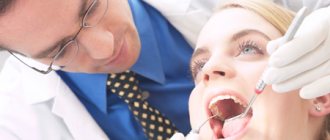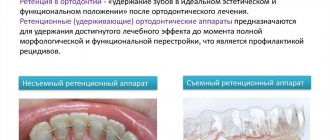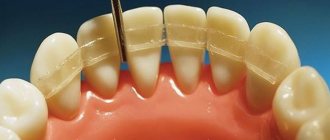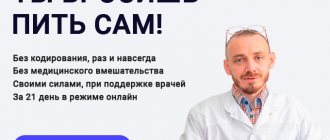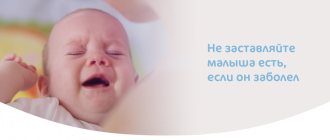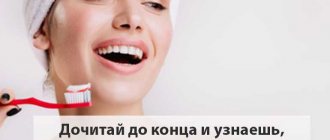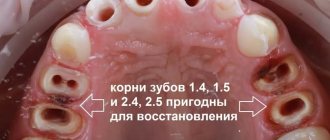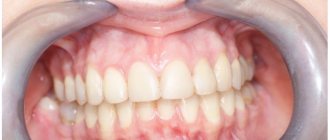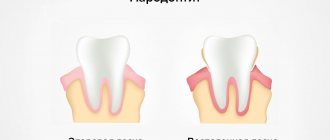Doctors do not recommend storing toothbrushes used by adults and children together. The fact is that most often it is adults who suffer from oral diseases, and storing toothbrushes separately is a means of preventing dental diseases in children. To keep your teeth healthy, dentists recommend changing your toothbrush every three months, as well as immediately after an illness: cough, cold, inflammation of the gums.
An important stage in the dental care process is the use of additional products - dental floss, mouth rinses. Let's tell you more about each option.
Caring for your mouth in general
Remember that hygienic care is required not only for teeth, but also for gums, tongue, and the inside of the cheek. For this purpose, you can use a separate soft brush and clean the oral cavity completely. The condition of your teeth directly depends on the health of your gums. It is within your power to promptly remove pathogenic bacteria and massage your gums. It is not at all necessary to go for professional procedures; you can massage your gums at home using your fingers. This will significantly speed up the blood circulation process and prevent stagnation.
Regular visits to the dentist
Comprehensive oral care cannot be achieved without regular visits to the dentist. It is common knowledge that a dental consultation is required twice a year. If you suffer from any diseases of the oral cavity, then you need to visit the doctor more often - in this case, the dentist himself will set the time for your next visit.
Regular visits to the dentist are an excellent prevention of dental diseases, because prevention is always better than cure. The doctor can notice some complications in time, prescribe preventive measures and thereby keep the teeth healthy and prevent their destruction.
It is also advisable to carry out hygienic teeth cleaning twice a year. It differs from “home” in the use of modern devices and technologies that clean teeth in very hard-to-reach places. Professional cleaning also cleans teeth of plaque and even tartar (it is impossible to get rid of tartar at home), and slightly whitens the surface of the teeth.
Choosing the right toothbrush and toothpaste
If you do not have problems with your teeth and gums, the best option is to use a brush with medium-hard bristles and use toothpaste without abrasive particles. If your teeth are prone to rapid tartar formation, dentists recommend giving preference to hard brushes. As for pasta, try to avoid little-known companies. Toothpastes with a whitening effect can be used no more than once a week. If you have problems with sensitivity or bleeding gums, choose suitable hygiene products.
If you follow all of the above measures in combination, you can maintain healthy teeth until old age.
What should be in your arsenal when caring for your teeth?
#1 – Toothbrush
The most effective cleaning is provided by a sonic brush. She removes everything unnecessary and carefully polishes the teeth. It is important to regularly change the attachment or the brush itself, depending on the design. Modern toothbrushes with artificial bristles are able to provide high-quality cleaning without microdamage to the enamel. But the shape and direction of the bristles usually do not play any role; it is important to brush your teeth correctly.
#2 – Toothpaste
Now there are a huge number of different toothpastes to choose from that can protect and even heal tooth enamel. When choosing, be guided by the composition of the paste and the dentist’s recommendations.
No. 3 - Irrigator
A very useful thing, it allows you to ensure hygiene of your wisdom teeth and the areas behind them. During orthodontic treatment and the presence of orthopedic structures, it is the irrigator that will keep your teeth clean and therefore healthy.
#4 – Dental floss
Allows you to remove food debris between teeth. Patients with fillings, veneers, etc. You should use caution when using a thread that has a thin metal wire in the weave.
No. 5 - Rinse aids
They allow you to provide not only hygiene, but also oral care.
No. 6 – Interdental brushes and monotuft brushes
Used while wearing braces.
How many times a day should you brush your teeth?
Firstly, you need to brush your teeth two, or preferably three times a day, immediately after your next meal. But usually you can’t brush your teeth during the day, so try to rinse your mouth after eating at this time.
But cleaning in the morning and evening before bed should become mandatory procedures for you. It is important for women to remember that going to bed with unbrushed teeth is like going to bed with makeup on.
How to brush your teeth correctly
Imagine that you have divided the oral cavity into four sections. And start brushing each of them sequentially for about half a minute, the lower teeth from bottom to top in the direction from the gums, the upper teeth from top to bottom, also from the gums. And then polishing movements back and forth.
There are toothbrushes with a built-in timer, they signal when you need to move to another area. In total, you need to brush your teeth for 2-3 minutes.
Do you use floss?
Most of us are as familiar with these simple devices as dental floss. If the teeth grow sufficiently evenly and tightly, the spaces between the teeth and the side surfaces of the teeth turn out to be inaccessible even for very “advanced” toothbrushes. Meanwhile, these secluded corners are very attractive to bacteria. Caries that develops at the point of contact of two teeth can only be seen by a dentist, and sometimes it is difficult to treat.
Meanwhile, flosses help to reach the most inaccessible protected areas between the teeth, removing food debris from there and depriving bacteria of a chance to survive. You need to floss before brushing. Also, use them after every meal. For use in public places, a flossette was invented - a compact and easy-to-use dental floss.
How is pain relief performed when treating pulpitis in adolescents under 14 years of age?
Pulpitis is often accompanied by severe pain, so high-quality and safe pain relief is especially important for effective treatment and comfortable well-being of the patient.
Treatment of pulpitis in children is carried out completely without pain, for this purpose local conduction anesthesia is used. For severe pain, it is combined with intrapulpal anesthesia.
To prevent a child from having a negative reaction to an injection of an anesthetic drug, in our clinic we use local application gel anesthesia (freezing).
If there is increased anxiety, preliminary sedation is recommended; before visiting the dentist, the child can be given light sedatives - valerian, Novopassit, motherwort tincture, according to the instructions and in the dosage indicated for his age/weight.
Eat right
There will be no strong teeth if the body lacks fluoride and calcium. Calcium is absorbed with the help of vitamin D, which comes from food or is synthesized by the body independently under the influence of ultraviolet radiation. Therefore, we take a pen and write down: veal, poultry, eggs, butter and sea fish are a source of vitamin D; yoghurts, cheeses, spinach and broccoli are a source of calcium; Black tea, wholemeal bread and fish contain fluoride. We include these products in our regular diet - and we can handle everything.
If there is still not enough calcium or fluoride in the body, we use dietary supplements and vitamin-mineral complexes. Fortunately, now their choice is especially rich.
Use toothpicks carefully
It’s not always possible to floss or rinse your mouth after lunch, let alone fully brush your teeth. A toothpick will help. Fortunately, most restaurants and cafes have learned to include a package of sharp wooden sticks among the items that must be on the tables (salt - pepper - napkins). Wooden toothpicks are preferable - they protect the enamel - but you can also use plastic ones. But in order not to damage the periodontal tissue - the ligaments of the gums and teeth - the toothpick must be used very carefully and it is better to replace it with a flosset.
If you take several x-rays in a row, you can get high levels of radiation
Reality: According to one of the leading specialists in dental radiology, D.V. Rogatskin, one intraoral photograph of a tooth corresponds to approximately one microsievert.
The radiation dose when taking one three-dimensional image on a dental tomograph is approximately equal to the radiation dose from a panoramic image and is about 20-50 microsieverts. What to do?
You should not apply to a peaceful dental office the same concepts that are used at a nuclear test site. During the treatment process, you can and should take as many x-rays as your doctor needs, and if necessary, do not be afraid to do 1-2 studies per year on a dental tomograph. It is necessary to understand that your attending physician takes a picture, or a series of pictures, so that the quality of treatment is at the proper level and the tooth will serve you for many more years. And such a modern method as tomography of the maxillofacial area goes beyond the boundaries of conventional x-ray examination and often allows the doctor to see in volumetric form the pathology that cannot be determined on ordinary photographs.
If a tooth falls out, you can do just fine without it.
Reality: Each tooth in our wide smile is a link in the dental chain. Each group of teeth performs its own function: some bite off food, others chew it. When a tooth is removed or falls out, the shape of the teeth and jaws changes. The teeth adjacent to the missing one begin to shift and fill the vacated space, which can subsequently cause difficulties with prosthetics.
Fact: Significant tooth loss leads to eating more monotonous and less balanced food, a lack of vitamins and microelements, which can affect brain activity.
What to do?
Lost teeth need to be restored, which can be done in various ways. The options of choice are restorative orthopedic structures supported either by implants or by natural teeth. Fact: The fewer natural teeth a person has, the higher the risk of developing coronary heart disease and heart attack. People with fewer than 10 natural teeth are seven times more likely to die from a heart attack than those with more than 25 teeth.
External factors
It is impossible to keep tooth enamel white and the teeth themselves healthy if there is a negative external influence. Such factors include addictions (taking drugs, smoking cigarettes and drinking alcohol), bad habits (biting nails, objects, solid foods, chewing gum or sucking fingers, lollipops, etc.) the effect of chemicals on the body (self-bleaching, working on production or living in a high-risk area), constant hypothermia, etc.
How to keep your teeth healthy and beautiful throughout your life? Dentists give a clear and concise answer: it is necessary to adhere to a healthy lifestyle, regularly visit the dentist and promptly treat dental and other diseases. Children should be taught to monitor the condition of their teeth from an early age, and adults should find time to follow all doctor’s recommendations.
Why do we need a special approach to the treatment of caries and pulpitis in mixed dentition?
A child’s new permanent teeth are very different in structure from the teeth of an adult – they have fragile, not yet mineralized (not saturated with minerals) enamel and unformed roots. In order for a tooth to “mature” it will take from 3-4 months to 1.5 -2.5 years for the mineralization of the enamel, and up to 4 years for the formation of roots. Those. in fact, the formation of full adult teeth is completed by the age of 16.
Until this age, a teenager has “special” teeth, so until the age of 16, he should be treated by a pediatric dentist, no matter how much he would like to be an adult and see an “adult” doctor. Only a pediatric dentist has sufficient skill in treating permanent teeth that have not yet fully formed - he has not only the knowledge for this (any dentist theoretically knows how to treat “young” teeth), but also the necessary daily experience. And the absence of relapses of the disease and complications in the future depends on correctly performed manipulations.
How is the progression of pulpitis in permanent teeth different in children?
Pulpitis is a serious disease, it must be treated, otherwise you can actually lose a tooth, get gumboil and even blood poisoning.
As in other age groups, pulpitis in adolescents under 14 years of age occurs in 2 main forms:
- Acute, with severe pain at night and in the evening, a painful reaction to temperature and chemical stimuli, an increase in temperature in case of general intoxication and the development of purulent complications.
In the absence of timely adequate treatment, the acute form becomes chronic.
- Chronic. This form of pulpitis can pass painlessly with the appearance of periodic pain reactions to cold, hot, sour, sweet. The acute inflammatory process in the pulp subsides, and the sluggish course of the disease contributes to the development of complications from periodontal tissues. Exacerbations occur periodically.
Attention parents! During adolescence, children may hide the disease and take painkillers uncontrollably.

